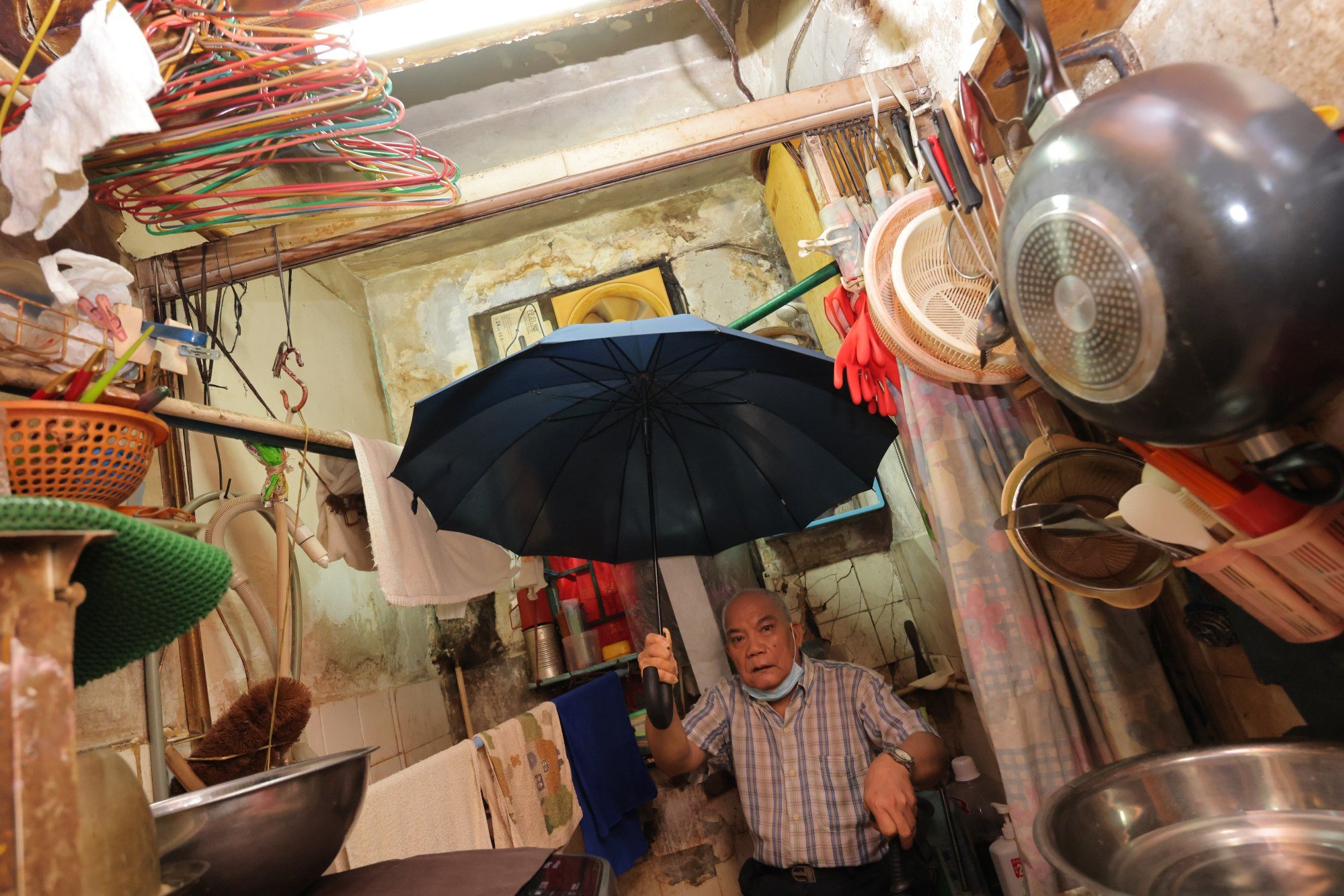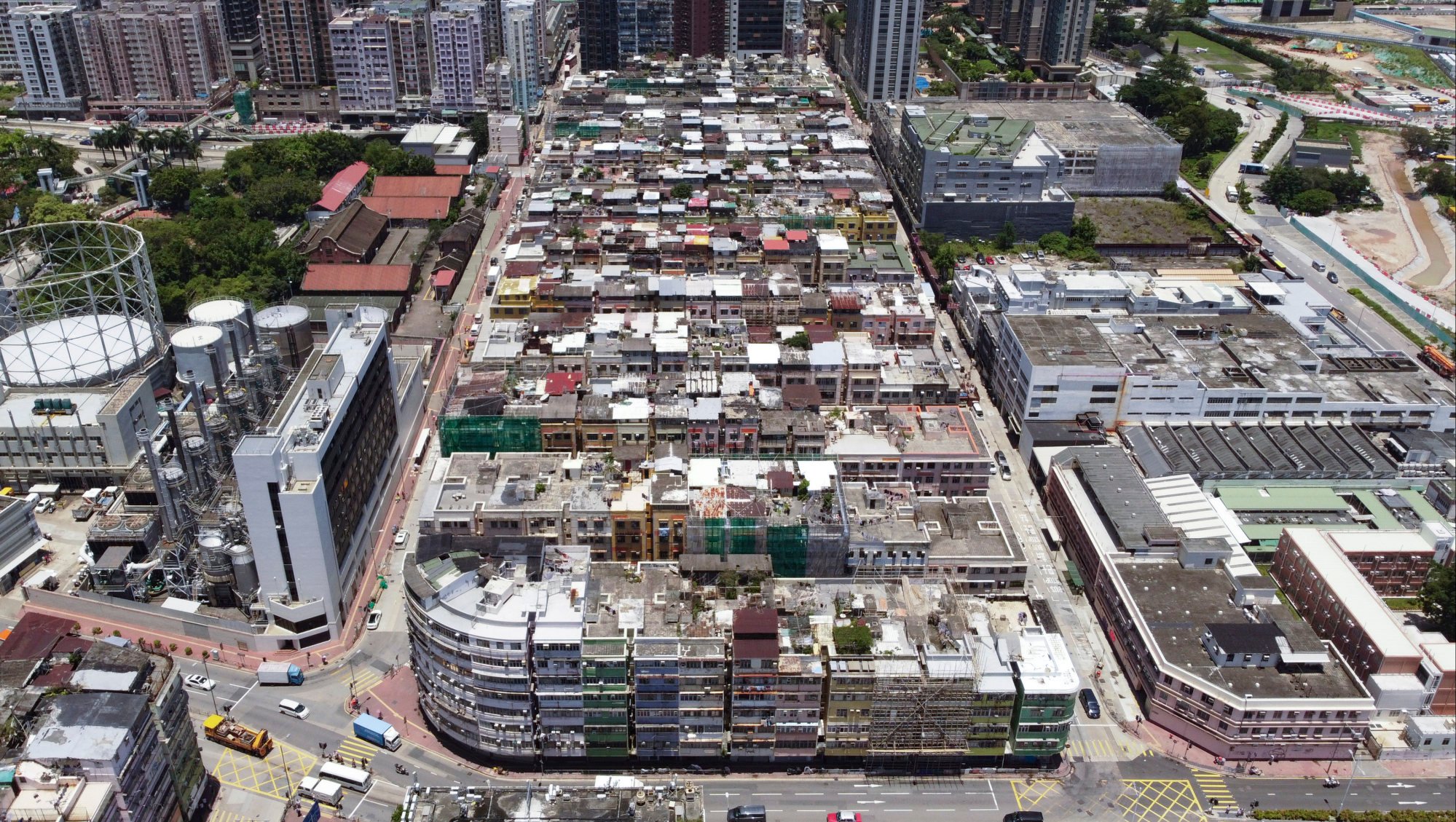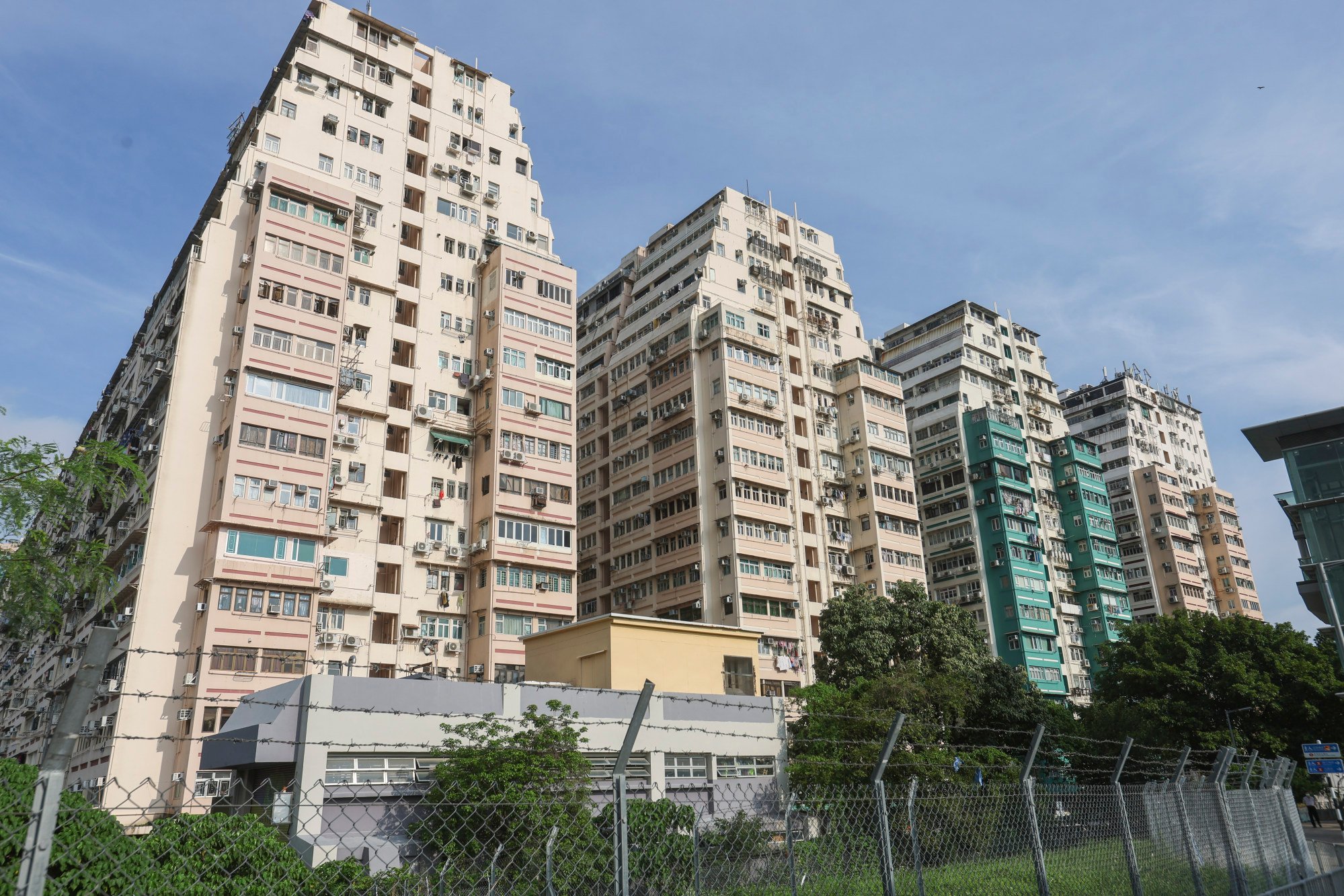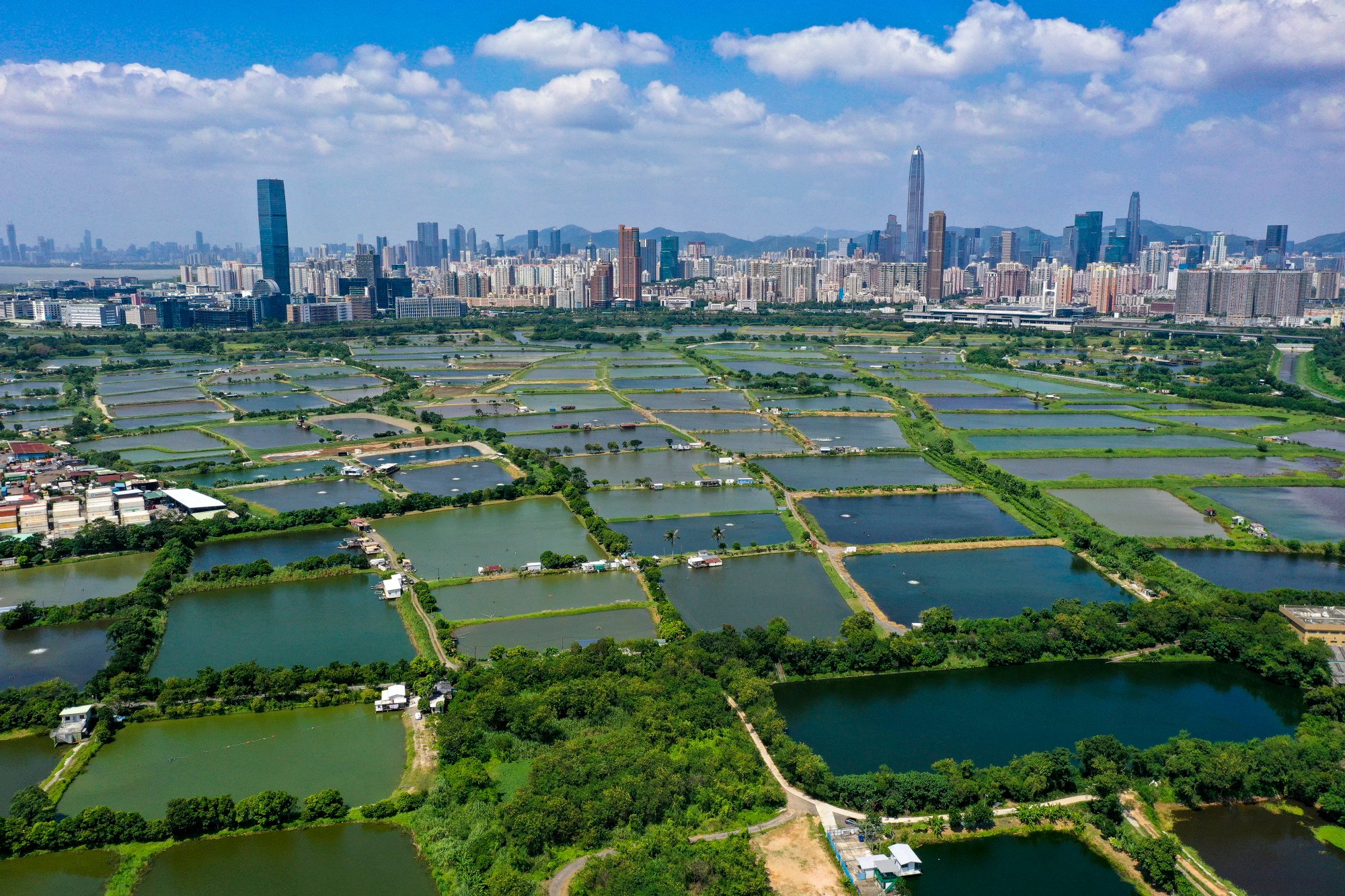Recent cases of concrete falling from Hong Kong’s ageing buildings have heightened public concern over the problem. In the second of a two-part series, Edith Lin looks at the new problems facing the Urban Renewal Authority and possible solutions.
Some of the old and decaying blocks in Hong Kong’s To Kwa Wan district are so run-down that residents find it tough to find tradesmen to do repairs.
Retired security guard Luk Kui-to, 77, said he had to take an umbrella with him when he went to the toilet because it leaked so much when it rained.
Do you have questions about the biggest topics and trends from around the world? Get the answers with SCMP Knowledge, our new platform of curated content with explainers, FAQs, analyses and infographics brought to you by our award-winning team.

He avoided sleeping in one of the rooms in the 460 sq ft flat, which is more than 60 years old, as concrete had fallen from the ceiling and there was a metre-long crack in a wall.
Hong Kong’s old buildings are crumbling. Why aren’t they being repaired?
Luk said he had tried to get the place repaired, but nobody wanted to take on the job.
“One repairman told me he dared not do it as the building was old and rotten, and he would be in trouble if there was an accident,” he said.

His block is in an area dubbed “13 Streets”, made up of 2,400 flats in rundown old buildings along 13 parallel streets, which was earmarked for redevelopment a decade ago.
“There are no signs of redevelopment, but I need a place to stay,” said Luk, who lives with his 57-year-old wife, a cleaner. “I can only take it day by day.”
For years, area residents expected the Urban Renewal Authority (URA) to step in, pay them compensation and tear the place down, but that has not happened yet.
The authority said in July it did not have the funds for such a large acquisition which would incur a loss of about HK$6 billion (US$785 million).
Inspection finds half of 47 ageing Hong Kong buildings at ‘immediate risk’
The downturn in Hong Kong’s property market meant the URA recorded its first loss in almost a decade, with a deficit of HK$3.5 billion in the last financial year.
It would have to borrow from 2024-25 on to cover redevelopment projects.
The authority has called several times for a review of the compensation paid to owner-occupiers of acquired blocks, but industry figures have instead asked for incentives to encourage private participation in urban renewal.
The compensation rate, assessed by independent surveyors appointed by the authority, is equivalent to the price of a comparable seven-year-old flat in the same district.

But URA managing director Wai Chi-sing, who raised the topic again in a blog post last year, said the present rate was unsustainable and called for a review.
The authority said the system worked when the property market was on an upwards trend and revenue from new projects exceeded acquisition costs of flats, but the decline in home prices and land value in recent years had left less in its coffers.
It recorded its last deficit of HK$2.2 billion in 2013-14 and, until last year, generated surpluses which peaked at HK$12 billion in 2017-18.
The URA has completed 35 redevelopment projects, building around 13,000 flats, since it was set up in 2001. Its 42 projects under way at present are expected to produce around 25,000 homes.
The body is expected to complete 2,200 flats and launch one new project by the end of the current financial year.
“Should this unfavourable market situation continue, it would adversely affect the sustainable development of urban renewal in the years to come,” the URA told the Post. “The URA believes that it is an opportune time to encourage a thorough discussion about viable options.”
At the same time, the number of old private buildings that could be potential redevelopment sites keeps growing.
Government figures show the pool of private buildings that are 50 years old or more rises by about 560 a year and is expected to total more than 14,800 by 2031.

Compensation rate: why seven years?
Many agree that the compensation paid to owner-occupiers of acquired blocks is a problem that needs attention.
The present system has been used since the URA was set up to replace the Land Development Corporation, a self-financing body criticised for its slow progress on urban redevelopment.
The corporation, unlike the URA, did not have statutory powers to take over land for public purposes and could not house affected residents in public housing. The compensation it paid was an amount equivalent to the price of a flat up to 10 years old.
The corporation also had to pay the government a land premium for the redevelopment of old neighbourhoods. The URA has been exempted.
Former long-time legislator Abraham Razack, the corporation’s last chief executive, said the advantages enjoyed by the URA meant that “at a minimum”, it should continue to offer owners compensation equivalent to the price of a seven-year-old flat.
“You are taking away their right to property. You should make sure you do it properly and make sure owners are compensated adequately so that they are willing to give up their rights,” he said.
“Urban renewal does not start with moneymaking ... It is not only about constructing new blocks. This is just an indirect product. It is about giving people living in the districts a new lease of life.”
Daniel Lam Chun, who had a stint as interim managing director of the URA before Wai was appointed in 2016, said arrival at a consensus on a new compensation system would waste time and energy.
He appealed to the authority to “use the most restrained financial resources to do the most urban renewal projects”.
“They should stick to the arrangement and see how much they can do with it,” Lam said.

He suggested the URA focus on redeveloping old districts, especially those not expected to make much profit, as private developers would tend to avoid them.
He pointed to Man Wah Sun Chuen in Jordan, where eight blocks with 3,200 households have been earmarked for a new residential and commercial area.
Redeveloping the half-century-old blocks provoked little interest from developers because development rules restricted the number of flats that could be built there.
Lam said the URA should be freed from having to build affordable housing, especially when it also had to compensate those displaced from acquired blocks.
“We should not put the responsibility of tackling the housing problem on the URA,” Lam said. “It has already paid the compensation for acquiring old buildings and has to subsidise homeowners again on the new housing price ... A double subsidy will definitely bring losses.”
Since the government spelled out its expectations of the URA in 2015 and 2018, the authority has set aside about four-fifths of 977 new flats as subsidised housing and starter homes to help beat the city’s housing crisis.
It also started to redevelop old and low-rise civil servant housing to provide 3,100 homes by 2033, with a third reserved as subsidised flats and the rest to be sold at market price.
The Development Bureau earlier said the mix balanced the demand for housing and the commercial viability of projects.
It also had no plans to adjust the formula. The bureau said it would not go down well with affected owners and make acquiring properties more difficult.
The bureau added the URA’s borrowing limit had been lifted from HK$6 billion to HK$25 billion to strengthen its capacity to take on the “13 Streets” and other projects.
“We reckon the business of the URA remains financially sustainable in the long run,” it said.
Inspection finds half of 47 ageing Hong Kong buildings at ‘immediate risk’
Incentives for private renewal projects
The seven-year compensation formula had put pressure on not only the URA but also the private sector, said Terry Au Nga-chun, a director of Richfield Realty, a company focused on property acquisition for investors and developers.
“Owners naturally ask for a more competitive price,” Au said. “Basically, when the URA announces redevelopment plans, we have to stop our acquisition efforts in that district.”
Au said they had halted 10 projects in Kowloon City after the URA announced a plan last year to demolish 120 buildings with an average age of 58 years to build 4,350 new flats.
The company said it had hoped to gain at least 80 per cent support from owners of its targeted buildings to meet the threshold for a compulsory sale, but so far had hit only 30 to 60 per cent at each project.
He said old buildings in the district fetched HK$7,000 to HK$13,000 per sq ft, but the URA’s most recent acquisition offer there last year was HK$17,798 per sq ft.
Au said the private sector had also found that bidding for government sites could cost less than acquiring properties.
A site in Kennedy Town was sold for HK$1.72 billion (US$220.5 million) in July, with an average price of HK$7,071 per sq ft, the lowest figure on Hong Kong Island since 2002.
Au said he hoped a review of the URA’s compensation rate would be carried out and that it would focus on redeveloping plots with complicated land ownership and leasing terms.
“The rest can be dealt with by developers. We can divide the work and cooperate to maximise the benefits,” he said.
Over half of Hong Kong buildings with inspection notices have yet to be checked
Lau Chun-kong, the chairman of the Hong Kong Institute of Surveyors’ land policy panel, agreed that the pace of private urban renewal had slowed, based on the number of compulsory land sale applications.
These peaked over the last decade at 39 applications in 2018 before a decline to a low of 22 last year and only four in the first four months of this year.
The government has proposed lowering the 80 per cent threshold for owners’ support for compulsory sales to encourage private sector participation and said it aimed to introduce a legislative amendment to that effect.
It has proposed lowering the threshold for buildings between 50 and 69 years old to no less than 70 per cent, and to 60 per cent for those aged 70 or more.
Lau said the lower thresholds could help trigger a new round of applications for private urban redevelopment, similar to 2010, when the original threshold of 90 per cent was brought down to 80 per cent and applications jumped from about six cases to 28 a year.
Lau, also the managing director of commercial real estate agency Colliers, said the government could also look at streamlined procedures for the private sector to pay when they include public lanes in redevelopment projects.
Building safety in Hong Kong is responsibility of owners, John Lee warns
Allowing developers to make use of back lanes would enlarge sites and increase their attractiveness and land value.
“They were designed for fire evacuation and public refuse collection but are no longer needed as new buildings are designed with the relevant facilities ... these are wasted spaces,” Lau said.
Connecting old and new districts
Veteran planner Andrew Lam Siu-lo, a former URA executive director, said the city should look beyond resolution of the URA’s financial problems and providing extra incentives to the private sector.
He called for a comprehensive review of the Urban Renewal Strategy, which was last revised in 2011 after a two-year public consultation, to lay out the URA’s major responsibilities to revitalise old districts, as well as preserve heritage.
He said it was time to establish a relationship between old and new areas as the government had been planning new development areas with the hope of renewing and thinning out dense populations in old districts.
The government has presented blueprints to create new housing and economic hubs in 30,000 hectares in the northern New Territories and through three artificial islands with a total of 1,000 hectares.

Lam said the administration could explore an option to sell new land to generate income for the URA to rejuvenate old areas, or use such sites to house people affected by urban redevelopment, although he admitted there could be controversy.
“If we are using them for relocation, we will have to tackle a political question of whether residents are happy about cross-district relocation,” he said.
“It takes time for a review and amending relevant ordinances and administrative practice ... If we don’t start now, the urban decay problem will just deteriorate.”
But the Development Bureau said it did not see the need for another large-scale review as the present approach remained largely valid.
Professor Ng Mee-kam, director of the Urban Studies Programme at Chinese University, emphasised that urban renewal was not just about profit-making, but also its contribution to society.
She called for a comprehensive long-term city plan where renewed neighbourhoods would attract residents, instead of having everyone rushing to new towns or mainland China.
“If we just focus on redeveloping old districts and building skyscrapers to earn money, we can easily lose some important things that we may never possess again,” she said.
More from South China Morning Post:
- Keeping Hong Kong’s ageing buildings safe must be a priority
- Hong Kong Urban Renewal Authority project to redevelop hidden park and 9 tenement buildings will revitalise ageing Sai Ying Pun district
For the latest news from the South China Morning Post download our mobile app. Copyright 2023.





